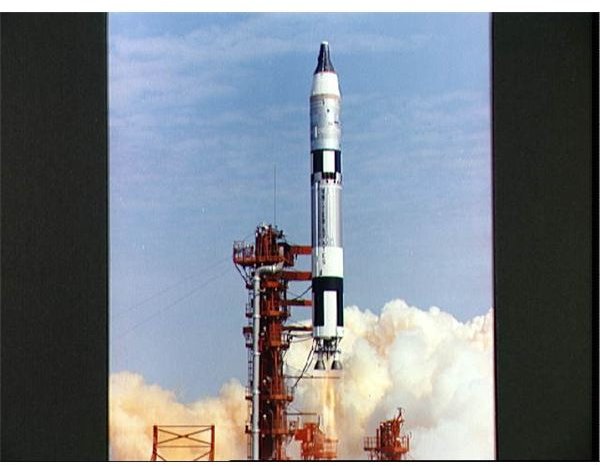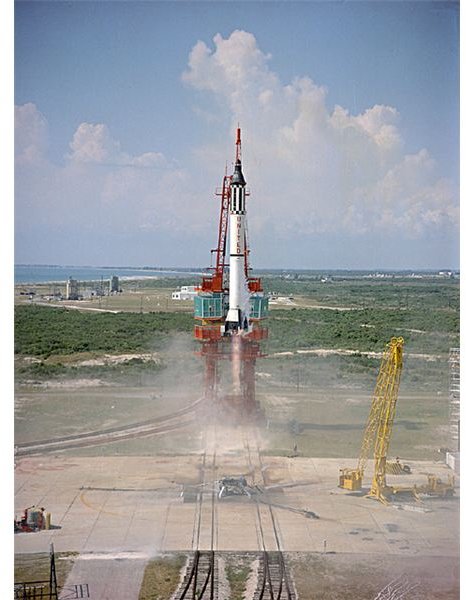About NASA Astronaut Height and Weight Requirements
Measuring Up
NASA astronauts have one of the most exciting, enviable and adventurous jobs on the planet. The United States has the most competitive and respected space program in the world and those dreaming of flying in outer space have to meet a number of strict criteria to even be considered. Astronauts are required to have at least a bachelor’s degree in a related field and have three years of professional experience before they can even apply. Although meeting the educational requirements of the program may be doable, not everyone will be able to measure up to NASA’s physical requirements. Before applying for the program, learn the NASA astronaut height and weight requirements and more about the requirements of other space programs.
First Flight
The first U.S. manned space flight took place in 1962 in the Freedom 7 spacecraft as part of the Mercury program. The original seven space pilots chosen for the program had to meet strict specifications dictated by NASA. Besides having extensive military flight experience, the original astronauts had to be no taller than 5 feet 11 inches and weigh less than 180 pounds. These physical requirements allowed the astronauts to squeeze into the inhabitable interior space of the Mercury capsule - measuring around 1.7 cubic meters in volume. The snug fit was made even tighter by the addition of 120 controls for the astronauts use.
Before American astronauts got into space, Soviet cosmonauts got there first. On April 12, 1961, Russian cosmonaut Yuri Gagarin became the first human in space and the first to orbit the Earth. Just like NASA, the Vostok program relied on a spacecraft equipped to only carry one cosmonaut. The Vostok 3KA spacecraft featured a somewhat roomier cabin about 2.4 meters in diameter, allowing cosmonauts to unstrap and experience weightlessness. Space was still at a premium however. Gagarin was selected for the mission due to his small stature; he stood at 5 feet 2 inches tall and weighed 153 pounds.
Size Changes for Multi-Passenger Flights
With the success of single-astronaut programs both the Soviet Union and the United States were looking to be the first space team to carry multiple passengers into space. Once again, the Soviets set the record first. In October of 1964, the Soviets launched, Voskhod 1 - a modified version of the Vostok capsule featuring three cosmonauts. The three cosmonauts were stuffed into a space the same size as that previously occupied by Gagarin. To accommodate the multi-passenger crew of the Voskhod, potentially disastrous steps were made. The ejection seat was removed and no spacesuits were worn.

NASA soon followed the Soviets and successfully launched Gemini in 1965. The spacecraft was capable of carrying two-passengers at once. With an interior only 50 percent larger than that of the Mercury, size was still a precious commodity on the spacecraft. NASA did offer a slight boost in the height requirements however, accepting applicants of up to 6 feet in height. The first manned Gemini flight, Gemini III featured Gus Grissom who stood at 5 feet, 5 inches; while the Jim Lovell one-half of the crew onboard the Gemini VII and Gemini XII stood at 5 feet 11 inches.
The Right Stuff
With the end of the Space Race, NASA moved towards larger space shuttles designed for reuse. This also allowed a change in the size of astronauts. Currently the physical requirements for NASA astronauts differ based on the professional tract chosen. From minimum to maximum, the NASA program can accommodate those ranging from just under 5 feet to 6 feet 4 inches in height. For pilot astronauts, (those in charge of operating the spacecraft), height must be between 64 and 76 inches so they can reach all the cockpit controls of the spacecraft. Payload specialists and mission specialist must both be between 58.5 and 76 inches in height. Astronauts must also maintain a healthy weight, proportional to their height.
A look at other space programs around the world shows similar requirements. To be accepted into the European Space Agency, astronauts must have a height of 153 to 190 cm or 5 feet 1 inch to 6 feet 2 inches. The Canadian Space Agency accepts those who range from 149.5 cm to 190.5 cm, about 4 feet 11 inches to 6 feet 3 inches tall.
Back to the Future
The 21st century promises to be an exciting time for those who follow the space program or have dreams of one day becoming an astronaut. NASA has big plans in place to explore the vast frontier of space. Plans are in place to retire the current shuttle fleet and build new spacecraft and launch systems, capable of eventually exploring a nearby asteroid and putting the first explorers on Mars. Though NASA’s next generation of spacecraft is still being designed, these new crafts will need to be smaller to increase fuel efficiency and are likely to need shorter astronauts, only time will tell how these new spacecraft will affect NASA astronaut height and weight requirements.
References
Astronaut Selection & Training (https://spaceflight.nasa.gov/shuttle/reference/factsheets/asseltrn.html)
Astronaut Requirements (https://www.nasa.gov/audience/forstudents/postsecondary/features/F_Astronaut_Requirements.html)
Voskhod 1 (https://www.astronautix.com/flights/voskhod1.htm)
Image Sources
Freedom 7. (Photo by NASA Headquarters - Greatest Images of NASA (NASA-HQ-GRIN); https://nix.larc.nasa.gov/info;jsessionid=2tusq4em2sg9l?id=GPN-2000-000859&orgid=12)
Gemini-Titan 3. (Photo by NASA Johnson Space Center (NASA-JSC); https://nix.larc.nasa.gov/info;jsessionid=2tusq4em2sg9l?id=S65-20742&orgid=8)
